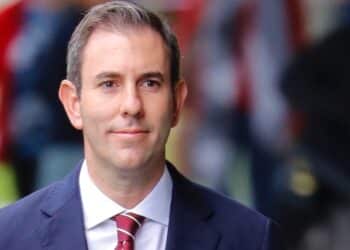According to the financial report 2021-22 Hays Salary Guide, more employees will receive a pay rise this year than last, but it will be significantly less then they hoped for.
The report – based on a survey of close to 3,500 organisations and representing over 8.8 million employees – found that 67 per cent of employers will award pay rises, but only 12 per cent will hand out increases of 3 per cent and above.
“The value of salary increases is driving a wedge between employers and employees,” managing director of Hays in Australia and New Zealand, Nick Deligiannis, said.
“On the one hand, we have almost seven in 10 employers intending to increase salaries in the year ahead, which is a remarkable sign of the confidence employers exhibit today.
“On the other, professionals say the value of these increases is far less than they deserve.
“This is creating a gap between what employers will offer and employees say they are worth. This divide must be managed sensitively if employers are to retain staff and attract new talent in short supply.”
Mr Deligiannis believes the best way to bridge the gap is to invest in the training and development of staff.
“After a year in which many skilled professionals put career plans on hold, they are focusing once more on their long-term goals,” he said.
“As our data shows, learning and developing new skills is now more important than a pay rise.
“A lack of promotional opportunities is also the primary factor driving professionals into the jobs market today. This makes re-investing in career progression pathways and staff development a sensible strategy for the year ahead.”




The old rule of three comes to mind here. i.e. Revenue is split in thirds between Adviser, Business Expenses/Overheads and the Owner/s.
Therefore anyone wanting more pay has to show they are bringing in enough to cover their wage three times over. Any less than that and it’s the Business Owner’s share/profit that declines. At some point their profit margin becomes so low that it isn’t worth the expense of employing the extra Adviser.
If you don’t get a decent pay rise and bonus each year you work for a dud company that is going nowhere so you should consider leaving as soon as you can.
This has been going on for decades, if you want a meaningful pay rise you find another job
This market dynamic has been going on for the last two hundred years.
If we get to 10,000 planners. Minimum base $200k easily and those employers stuck in the past are going to wonder why their employees found better offers.
If you are paying an employed financial planner $200k you’re not making anything yourself. It’s simpler and easier to offshore as much as you can and just take on less clients.
I think you are reading the supply / demand economics wrong here.
If you are operating in the Wholesale space then yeah there will be quite a few $200K jobs, but in the retail space it would need to be an extremely high quality book to make it worthwhile (say 80-100 clients @ $6,600 p.a.).
What we are seeing is businesses culling huge chunks of clients (lower net worth), so whilst there will be a lot less advisors, there will be exponentially less clients being looked after that would be paying advice fees that would require the hiring of an Advisor.
The businesses that are struggling the most are those with the greater proportion of lower net worth clients. Businesses are having to hike fees significantly and then culling off their lower fee paying clients as soon as their cash flow allows it. There really is no other way in the current regulatory environment.
You would need a huge revenue to justify a $200K salary (plus Super, licencing, PI, software, ASIC fees, cost of SOA/ROA every year, administration etc.). There is an enormous risk at the moment in hiring someone on those dollars so there needs to be a justifiable return, there will be businesses out there that will have the client base to support this but I think generally you are reading where things are going completely wrong. It is all about less clients, less staff, higher fees per client, less total revenue, and most importantly as little risk as possible.
Hard task, to try & keep your business afloat, whilst paying your employees more & keeping them happy…..
Try running a business without your employees and see how long you stay in business for
I have tried it, and the answer is much longer. Less employees, less clients, less service, less revenue. But profitability is adequate and the business hasn’t gone under. Culling employees and clients is the only way to survive in the face of regulatory onslaught.
Well buddy that can be done for most, just means more administrative duties and less clients. For many SME in FP industry that is exactly what’s happening thanks to the ever increasing regulatory and compliance burdens placed…